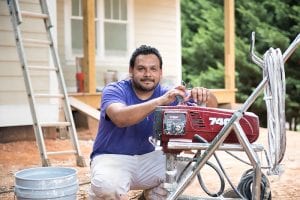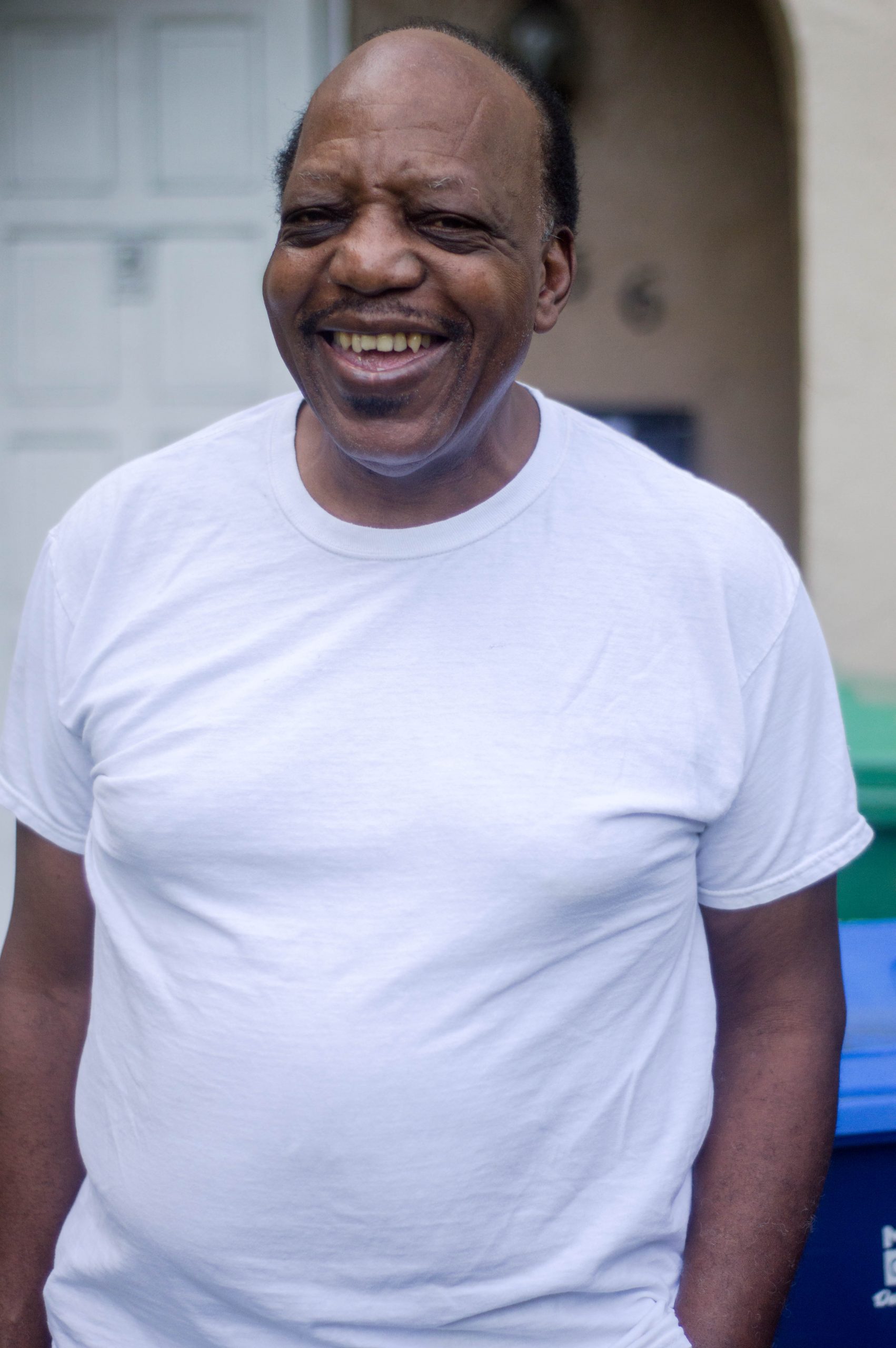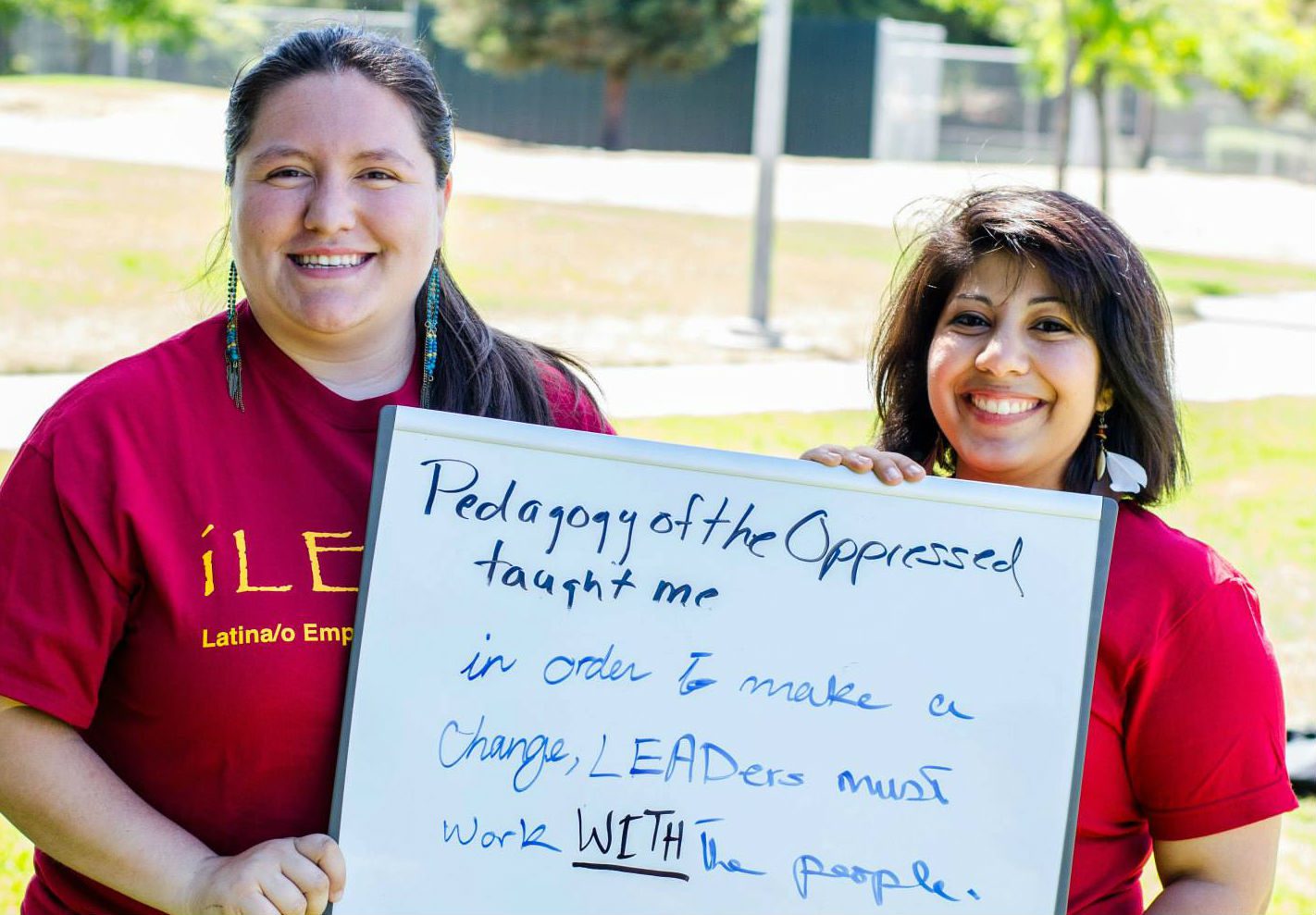
Essence of Beauty in Winston-Salem, North Carolina, has secured a loan from the Carolina Small Business Development Fund. Photo courtesy of the Carolina Small Business Development Fund
A few years ago, a significant funding opportunity came up that many community development financial institutions (CDFIs) were excited about. My staff at the Carolina Small Business Development Fund (CSBDF) had been working to develop a plan and application for it when we were approached by staff from another CDFI who asked if we would be willing to submit a joint application, with them taking the lead. After discussing the idea further, it became clear that this CDFI wanted to add value to its funding application by drawing on our experience and credibility within communities of color, as a CDFI led by people of color, but not necessarily our skill set or expertise.
I was so disappointed. Rather than approaching this as a partnership, this CDFI assumed that we did not have the capacity to submit an application on our own and that simply adding our name to the application would increase the other CDFI’s engagement within communities of color.
Unfortunately, this was not an isolated incident. Unquestionably, CDFIs play a critical role in bringing investment and resources to communities that have historically been underserved. Individuals and businesses in these communities have long faced significant barriers in accessing capital and resources to help them start and grow businesses, develop affordable housing, establish community facilities, and, ultimately, build wealth and expand economic opportunity.
As mission-oriented lenders, CDFIs’ unique focus and expertise in serving underserved communities help to mitigate some of these barriers, particularly in communities of color. But within the industry there is a significant disparity between CDFIs that are led by people of color and those that are not. These CDFIs face the same challenges as the communities they serve.
I have seen how a lack of access to capital, capacity-building resources, and technical assistance significantly constrains the ability of CDFIs led by people of color to achieve greater impact. The assumptions that were at play in my experience mentioned above are pervasive throughout the industry.
The Importance of CDFIs Led by People of Color
Due to generations of disinvestment, communities of color are particularly vulnerable to economic downturns and are left behind in periods of recovery. As we experienced during the Great Recession and subsequent recovery, people of color felt the deepest impacts but have yet to benefit from economic growth in more recent years. For instance, the unemployment rate for African Americans rose to 15.9 percent in 2010 and 2011, but peaked at 8 percent for whites.
Since the recovery began, unemployment rates for African Americans and Hispanics continue to lag. In fact, in North Carolina, the unemployment rate for whites is now lower than pre-recession levels, but remain higher than pre-recession levels for African Americans and Hispanics. Inequality along racial and ethnic lines continues to increase, with economic opportunity and mobility becoming more and more out of reach for far too many Americans.
CDFIs led by people of color are central to reducing inequality and revitalizing communities. These CDFIs, often relatively smaller in size, maintain close ties to the communities they serve and more often than not, have “boots on the ground” and roots within these communities. They have a deep knowledge of the challenges their communities face. With limited resources, these smaller CDFIs leverage their roots to help level the playing field and support the revitalization of communities of color. Community members see themselves reflected in the leadership, staff, and board of directors of these CDFIs, which engenders trust.
These CDFIs can leverage this social capital to bring stakeholders together to overcome the challenges faced in communities of color. At CSBDF, for example, we have developed several programs aimed at meeting the specific needs of diverse populations. We know from experience and research that African-American business owners face significant barriers accessing capital. We examined our loan portfolio, looking particularly at those that had been denied, to assess the factors that led to our decisions. We identified four primary challenges that are present among African-American loan applicants: poor creditworthiness, lack of collateral, lack of equity, and lack of business acumen.

Alejandro Herrera, owner of King of Kings Painting in Asheville, North Carolina, was approved for a business loan from the Carolina Small Business Development Fund. Photo courtesy of the Carolina Small Business Development Fund
In response, we developed both technical assistance and loan programs tailored to meet applicants’ needs and ensure their long-term success. For instance, in the Carolina Small Business CARES program, loan applicants who are just outside of our lending criteria can receive individualized technical assistance to mitigate the challenges they face with the goal of being able to successfully apply for a loan once they complete the program. Our work with Historically Black Universities and Colleges (HBCUs) furthers our impact among African-American entrepreneurs. What began as an internship program has grown to formal partnerships with HBCUs in North Carolina to develop entrepreneurship training curricula and new infrastructure for supporting small businesses.
At the start of 2017 we opened the Innovation and Entrepreneurship Center in southeast Raleigh, a predominantly African-American neighborhood, in partnership with Shaw University to leverage our collective resources and expertise to expand opportunity to students and minority business owners. Finally, we established our Programa Empresarial Latino, focused on serving North Carolina’s rapidly growing Latino population, with dedicated bicultural and bilingual staff.
The Impact of Disparate Access to Resources
Disparate access to resources affects the financial performance of CDFIs led by people of color. The CDFI Fund’s institution-level report for 2014, which included data for 244 CDFI loan funds, was disheartening. Of the CDFIs, 53, or 22 percent, were owned or controlled by people of color. Compared to white-led CDFIs, their asset size and capitalization was generally much smaller and they relied on different types of resources to support their lending and operations. The average total assets for the CDFIs led by people of color was $14.1 million, and the sum of their total assets was $749.6 million, accounting for 10 percent of all assets of CDFI loan funds.
White-led CDFIs, on the other hand, had average total assets of $36.4 million, and nearly $7 billion in aggregate, accounting for 90 percent of all CDFI loan fund assets. These disparities have significant implications. Given the mission of CDFIs, and their focus on serving underserved populations, it should be surprising that only 22 percent of CDFIs are actually led by people of color. A lack of extending opportunities and committed recruitment for people of color to lead these organizations is contributing to this low percentage. Of the ones that do exist, their comparatively low asset size limits their ability to leverage resources and expand their impact on communities.
Assets are important—they can be pledged as collateral for investments, set aside for reserves, used as matching funds, or applied to fund operations. A larger asset size provides confidence to investors that the organization is financially strong, has managed resources well, and is able to grow to scale. With limited access to capital, CDFIs led by people of color are not able to expand their effectiveness in the communities they serve.
The CDFI Fund’s data showed that on average, CDFIs led by people of color had $13.6 million in capital support for lending, compared to an average of nearly $27 million for white-led CDFIs. In terms of operational support, CDFIs led by people of color also received less on average—$761,000 in contributed operating support, versus $2 million. Operational support is critical for furthering the work of CDFIs. In addition to the revenue-generating lending activities that CDFIs engage in, they also provide technical assistance, education, counseling, and one-on-one support to borrowers to achieve two important outcomes:
- Long-term success for a sustained impact in their communities
- Mitigation of defaults and delinquencies that threaten a CDFI’s financial performance
These activities are central to a CDFI’s value proposition, yet in order to implement them effectively, CDFIs need operational support to develop programs and hire and retain staff. Lower assets make it difficult for CDFIs to obtain and leverage capital, creating a cycle in which CDFIs with money are able to attract more money, while CDFIs with limited access remain under-funded and under-capitalized.
In addition, capacity is a major constraint in the growth and expansion of minority-led CDFIs. It takes significant staff time to monitor funding opportunities, develop relationships with funders, prepare and submit the often laborious funding applications, and comply with reporting requirements. Small CDFIs that are already stretched thin must choose between devoting human and financial capital to implementing programs or directing resources toward development efforts. The choice is a difficult one that highlights the tension between chasing resources and the day-to-day activities that help CDFIs’ clients.
Aligning Capital With Impact
Funders have taken some steps to direct resources to mitigate the barriers faced by underserved populations, particularly people of color. The CDFI Fund itself, for example, has redesigned its financial assistance award application to better assess how CDFIs are looking into and addressing the need in their markets, and how they measure outcomes and impact. Efforts like these are important in moving the industry toward better alignment. But there are still significant pain points for smaller CDFIs managed by people of color. While there are many national initiatives that focus on addressing inequities within communities of color, CDFIs led by people of color are underrepresented in receiving these awards and focused infusions of capital. Larger CDFIs that do not have roots in the community and those that do not reflect the community on the board or staff are provided even larger amounts to serve communities of color.

Employees of Grace Federal Solutions LLC in Raleigh, North Carolina, which is one of Carolina Small Business Development Fund’s borrowers. Photo courtesy of Carolina Small Business Development Fund’s borrowers
While there are several factors affecting awards, one reality is that the competition for limited resources has increased over the past couple of years, which typically favors the capacity of larger CDFIs. We’ve seen this firsthand. CSBDF has submitted several applications for national funding opportunities, but we’ve had difficulty obtaining funding. Larger CDFIs often have stronger balance sheets, extended partnership networks, and more established programs.
I have recommended to one funding source that increased points be extended to CDFIs that are led by people of color with a proven track record of working in communities of color with a staff and board that reflect the community. I often use the missed opportunities of the complex CDFI Bond Program as an example of how creative and committed engagement could have created new opportunities for smaller and mid-sized CDFIs, and those led by people of color.
The CDFI Bond Program had stringent requirements that were difficult for many smaller CDFIs to meet. For example, CDFIs must have sufficient equity in place to meet the collateral requirements of the program. In seeking to deploy funds quickly, money was funneled to larger CDFIs with greater capacity, which is understandable. However, some funds could have been allocated for smaller CDFIs, or the Opportunity Finance Network (OFN)—as the industry leader for CDFIs—could have leveraged its network to match small CDFIs with larger ones to expand the types of CDFIs that could participate in the program.
A real commitment to addressing the equity and capital needs of CDFIs managed by people of color would mean intentional efforts to match larger CDFIs and banks that are players in this area. CDFIs led by people of color, just like the people-of-color-owned businesses they serve, may for now represent a greater risk for funders given their financial performance and capacity.
On the other hand, just as CDFIs take a flexible and individualized approach to funding those businesses, our institutional funders must adopt a similar outlook in how they evaluate CDFIs for potential investments. It will take bold action by funders to make investments that not only yield the more immediate outcomes we typically look for (businesses financed, jobs created or retained, etc.), but also take a broader approach aimed at strengthening the organizations themselves in the long term.
Larger CDFIs can also play a role in increasing both financial resources and capacity of smaller, people-of-color-led CDFIs by leveraging their assets, expertise, capacity, and relationships. They can also offer operational support, including sharing of best practices, developing policies and procedures, programming, and development support. In return, the larger CDFIs will be able to deepen their reach in underserved communities. This sort of collaboration would retain local roots in communities, while increasing the resources available for lending, offering programs and technical assistance, and strengthening the local institutions.
Although there are significant social and economic challenges in communities of color, we must not believe that they are insurmountable. The CDFI industry—both CDFIs themselves and their funders and investors—face a critical challenge: aligning capital with impact in such a way that does not exclude smaller and emerging CDFIs led by people of color. I believe the CDFI industry is poised to make an impact in reducing these challenges and leading communities toward economic revitalization.
To achieve this, we must expand access to resources. We must work together, evaluate our collective effectiveness, and direct our efforts and capital to the individuals with the greatest need, and the institutions that serve them. As Dr. Martin Luther King Jr. said, “Life’s most persistent and urgent question is, ‘What are you doing for others?’” As CDFIs we must continually ask, “What are we doing for our communities?” and let that question drive our efforts and resources in the service of our communities. The data and numerous client stories show that the CDFI industry overall is making a positive impact in communities across the country. But this impact could be much greater.
CDFIs that have roots in communities, with diverse staff and board, and that are actively engaged in neighborhoods should be able to access the resources and support they need to reach their full potential. As I often say, it is time for less talking and more positive action to drive real investment. The current “bandage” approach of some investors—investing just to say an investment is made without a strategic intent—must cease. If significant investments can be made in other institutions, such as local symphonies and the arts, then measured investments can certainly be made to build capacity of CDFIs developing the economic infrastructure and precious human capital in low-wealth communities of color.





Hello, this is so true . . . we are a CDFI located in Little Rock Arkansas (People Trust Community loan fund). We have been certified for 2 1/2 years and have applied for funding from CDFI Fund, SBA, and banks, all to no avail. The larger CDFIs in our area are funded over and over again and they have billions. We are the only CDFI that is led by persons of color and we are clearly excluded out of the loop when it comes to funding, however we have not let that stop our efforts of helping our community. Thanks for speaking up on this issue.
Warmest regards
Arlo Washington, Executive director
People Trust Community loan fund
[email protected]